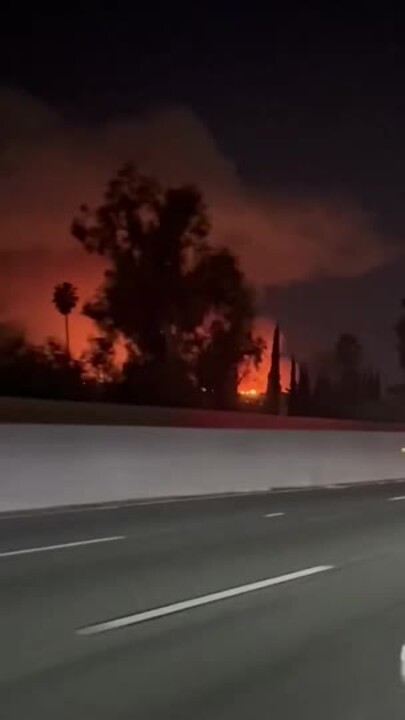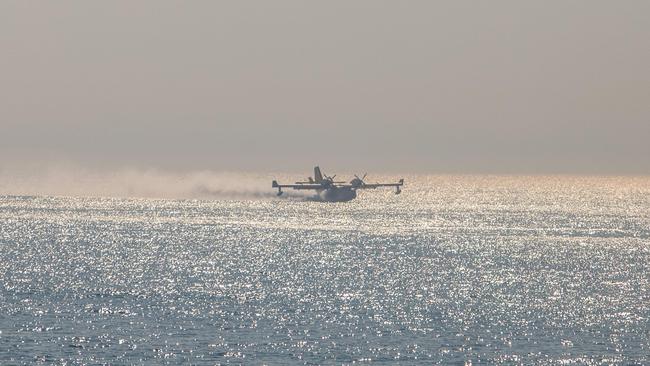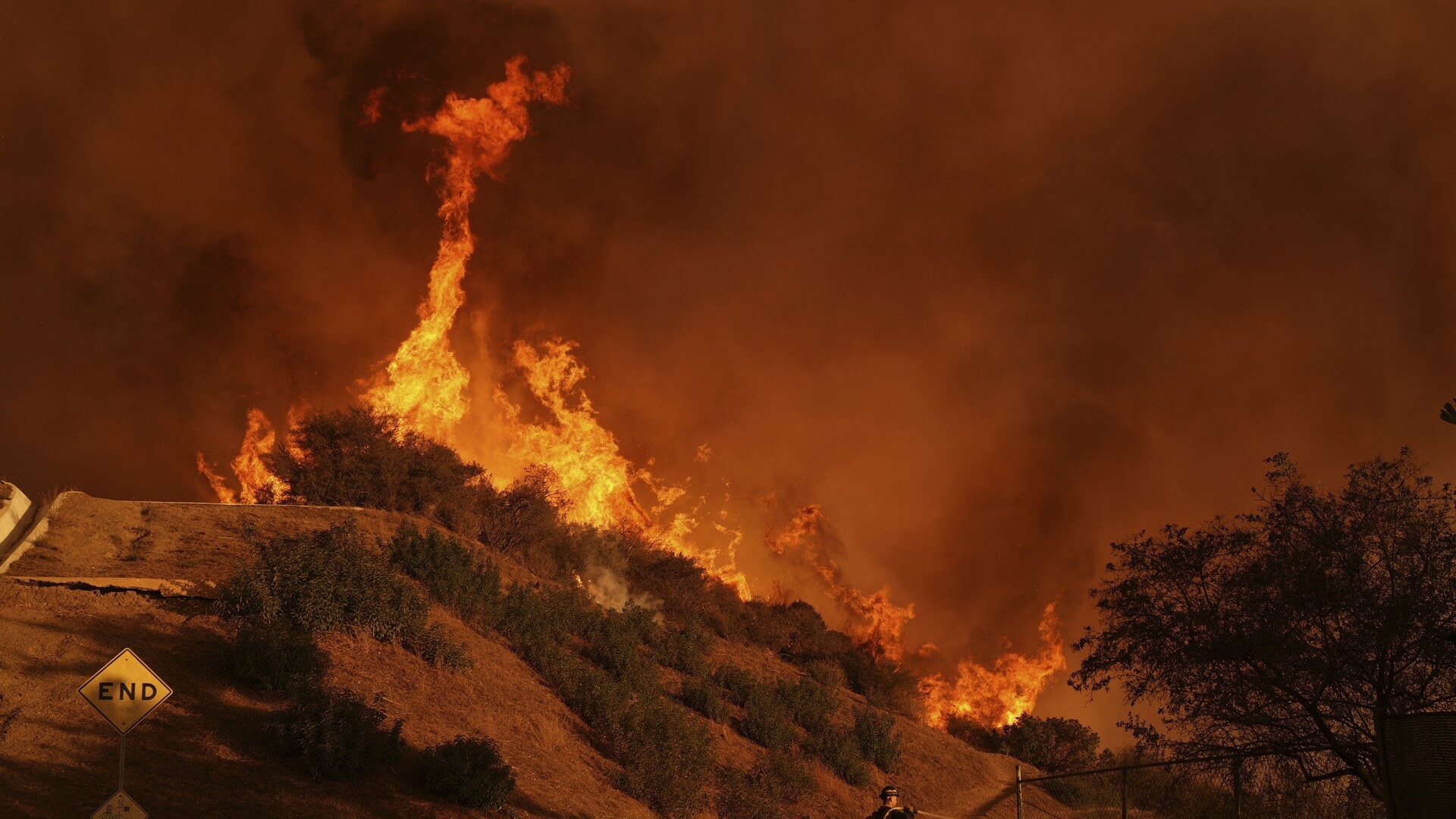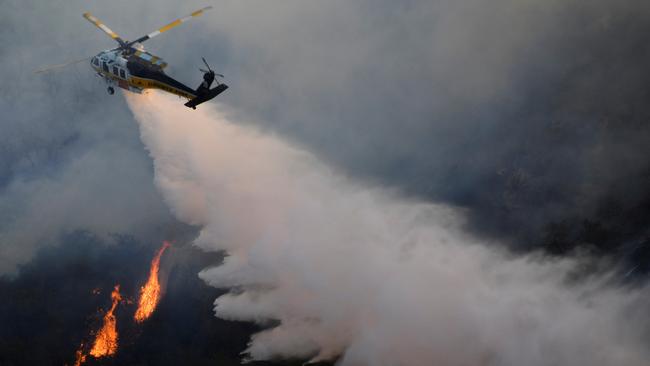Why using seawater to battle the LA fires is a last-ditch option
Aerial firefighters are scooping up water from the Pacific Ocean to battle the Palisades fire. But there is danger in using salt water.

As raging wildfires incinerated the Pacific Palisades neighbourhood of Los Angeles County, an enormous source of water lay tantalisingly within reach: the Pacific Ocean.
But for a variety of reasons, seawater – which has been used to some extent against the Palisades fire – isn’t ideal for fighting fires.
It damages the environment, is corrosive and difficult to access.
Firefighters spray blazes with water because it cools down materials that are burning and wets those that could catch fire.
In that regard, saltwater and fresh water are basically the same, said Michael Gollner, a University of California, Berkeley, fire scientist.
However, when seawater is dumped in an area, it can raise the accumulated salt content of the soil once it evaporates, a process known as salinisation.

“We try to avoid it, because saltwater is a soil steriliser,” said Tim Chavez, a former assistant chief for Cal Fire and retired fire analyst based in Hemet, Calif.
Too much salt in the soil inhibits plant growth by making it challenging for the roots to absorb water, according to the Food and Agriculture Organisation of the United Nations. Salinisation also affects how easily nutrients move through the soil, diminishing the overall fertility of an area. Additionally, salt can be toxic to species that are less salt tolerant, such as some boxwood and dogwood trees.
“If you add salt to the soil, you’re not going to be able to grow anything there the next year,” Chavez said.
Saltwater can also weaken and damage firefighting hoses, pumps, hydrants or tanks that are typically made from materials such as iron or steel, which are less resistant to corrosion, said Ping Furlan, a chemist and professor at the US Merchant Marine Academy.
Materials designed for saltwater use, such as marine-grade steel, are coated with anticorrosion treatments to minimise this effect, he added.
Firetrucks and other land-based equipment, which typically draft, or suction, water from dedicated hydrants or tanks, are designed for use with fresh water.

When hydrants go dry, as some did in the Pacific Palisades, firefighters can draft water from a swimming pool or lake, Chavez said, but they can’t easily draw seawater.
“I don’t think anybody would draft out of the ocean because you can’t drive close enough to it,” Chavez said.
Still, LA County firefighters have used some water from the Pacific Ocean to help douse the flames in the Pacific Palisades from the air, deploying the county’s two Bombardier CL-415 “super scoopers” to the area, according to Erik Scott, the Los Angeles Fire Department’s public information officer. (One of the planes was grounded on Thursday after colliding with a drone, but the other continued to retrieve ocean water to fight the fire.)

Super scoopers, which resist corrosion and are able to handle saltwater, can collect water from oceans, lakes and other sources to drop on fires. These planes can make rapid round trips dumping 1600 gallons at a time, said Chris Thomas, who works for LA County Fire and is a spokesman on the Palisades fire.
“They’re on standby, and as soon as this fire broke out, they were activated and sent out here,” said Thomas, adding that LA County is the only place in Southern California to have super scoopers on hand.

But it’s hard to hit a target from the air when powerful Santa Ana winds are blasting through.
“This is precision flying on steroids,” Thomas said. “They’re guided in by a helicopter with winds whipping back and forth, trying to get down low enough to dump water, but also making sure that they don’t have an accident and stay high enough to be safe.”
Aerial firefighters adjust their drops for the wind so that the water will drift into the targeted flames, but it’s critical that these drops don’t occur over cars and buildings, as the weight of the water could crush or damage them.
“Water weighs roughly 8 pounds a gallon, and you’re dropping a thousand gallons,” Thomas said. Drops are aimed at the wildland and brush abutting homes in the area.
Other aerial firefighting efforts hinge on fresh water.
In addition to the super scoopers, 16 other aircraft were fighting the Palisades fire as of Friday, according to Thomas. They included 10 Firehawks – think US Army Black Hawks equipped with water tanks that use retractable hoses to suck in as much as 1000 gallons of water from dedicated sources – as well as air tanker planes.
Other fires burning in the area have additional aerial craft assigned to them, but they don’t include super scoopers.
“Once this gets under control, they can be assigned to one of the other fires,” Thomas said of the super scoopers assigned to the Palisades fire. “They’ll go to the next largest fire.”
-Wall Street Journal





To join the conversation, please log in. Don't have an account? Register
Join the conversation, you are commenting as Logout